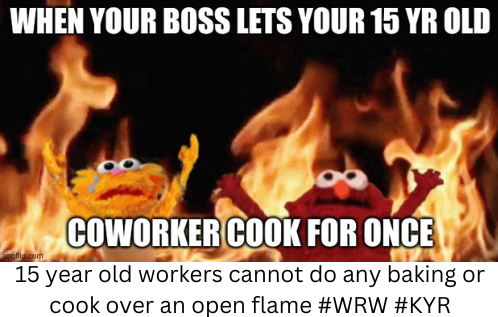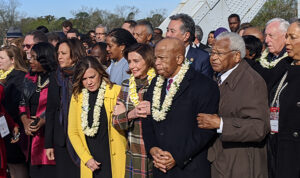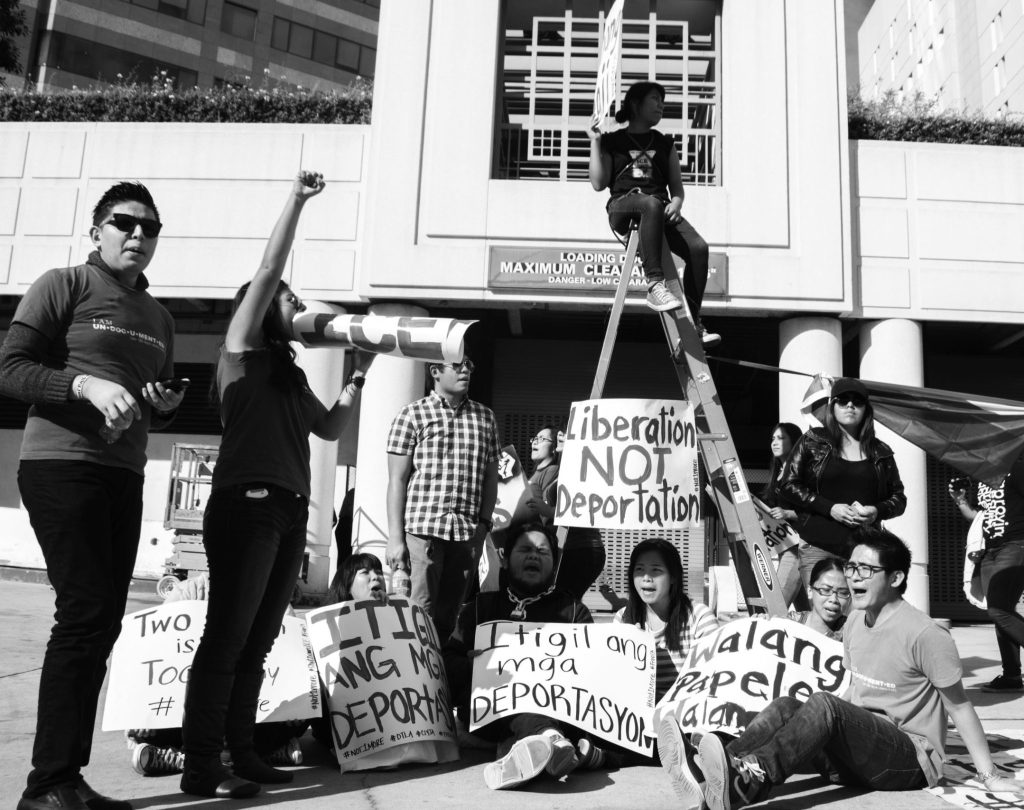A former LAUSD student reflects on her experience returning to the classroom as a labor studies educator.
By: Victoria Fierro
I attended Van Nuys High School in the middle of the San Fernando Valley, where the working class and middle class teenagers converge. Here, like many other schools in the Los Angeles Unified School District (LAUSD), my classmates started working in their junior or senior year to support their families. I remember seeing my peers looking exhausted in class. When asked why, they would say, “It’s because of work.”As a fourth-year UCLA Labor Studies student and intern, I am now deeply reflecting on what they were experiencing. Were they victims of wage theft? Were they working in dangerous and precarious conditions? This fall, I thought of my overworked peers while facilitating conversations with LAUSD students in two know-your-rights workshops at Gardena Senior High School and James A. Garfield High School.
The UCLA Labor Center’s Young Worker Initiative and Young Workers Education Project (YWEP) visited Gardena High School to lead a three-day discussion on the 1892 Homestead Strike with 11th-grade history students. The lesson encouraged students to explore the relationship between labor and capital, and workers’ responses to industrial reorganization in the late nineteenth century. Students engaged in a simulation of this historic event, highlighting its impact on workers, unions and American industry. I worked alongside student groups to answer questions and clarify misinformation with the expertise of YWEP Director Nicolle Fefferman, UCLA Labor Center Community Education Specialist Jazmin Rivera and UCLA Labor Studies student Carolina Sarabia.
Initially, the students were apprehensive. They thought role-playing historical scenarios was childish and silly. But once students understood that they had creative control in writing their character and they could be as dramatic as they wanted, they started to have a blast. The opportunity for friendly class debates sparked their competitive spirit, and they dived into collaborative decision-making, public speaking and a dynamic Socratic discussion.
At Garfield High School, Nicolle, Jazmin and our Labor Studies intern team met with two 12th-grade government classes over five days. We facilitated a series of Workplace Readiness Week modules developed by YWEP and the UCLA Labor Center, which were created based on state legislation requiring that all California public high school students learn about their rights at work. Through this learning cycle, we guided students in participatory activities and fun peer-to-peer exchanges where they became experts on current California and U.S. labor and workplace rights. Students learned about their rights as young workers and the history of labor movements’ efforts to create and codify those rights, and we provided them with an informational brochure with resources available to protect and enforce their rights. As a culminating activity, students developed memes to share with their school community and friends and families focused on what they learned about labor rights and frequent labor violations like wage theft. Students had a blast connecting real-world labor experiences with their crafty, meme-creating side. Their creativity, humor and critical thinking shined.

As a former LAUSD student, I wish I had guest teachers and facilitators with the same passion as Nicolle, Jazmin and the UCLA Labor Studies student interns. As a high school student, I loved seeing fresh faces in our classroom, because it brought new energy into oureveryday, often sluggish, routine. During my time in high school, I did little group work, and I wasn’t asked to work collaboratively with my peers. At such a blossoming age, it’s important for students to learn from each other and connect on their different experiences and interpretations of curricular content. I recognize that teachers like to stick to a rigid, neat structure. However, new lessons like those created by YWEP and the UCLA Labor Center’s Young Worker Initiative are important for actively engaging students. Without exciting lessons, students become bored with the same day-to-day routine.
Energetic lessons and activities, such as the Homestead Strike simulation and Workplace Readiness curriculum, enlighten students about historical and contemporary topics that affect them, their community and society. I wish I had learned about workers in this way. I wish my working classmates at Van Nuys High School had been able to as well. Lessons like this should be taught to all high schoolers in Los Angeles and throughout the country. Every student will work at one point in their life. As working hard is the main component of the American dream, students must know the history of their working environment today and how to help protect themselves from exploitation.



